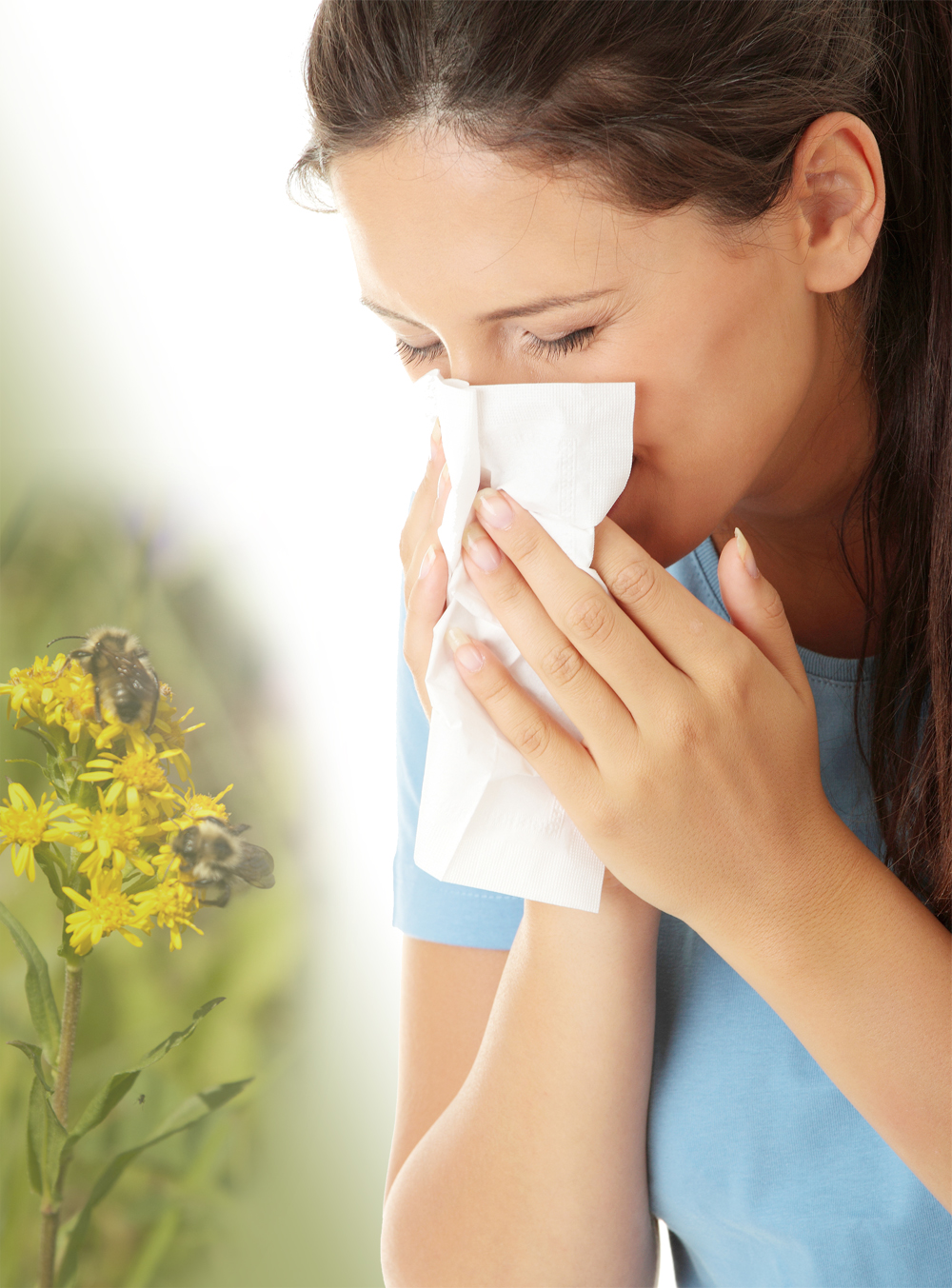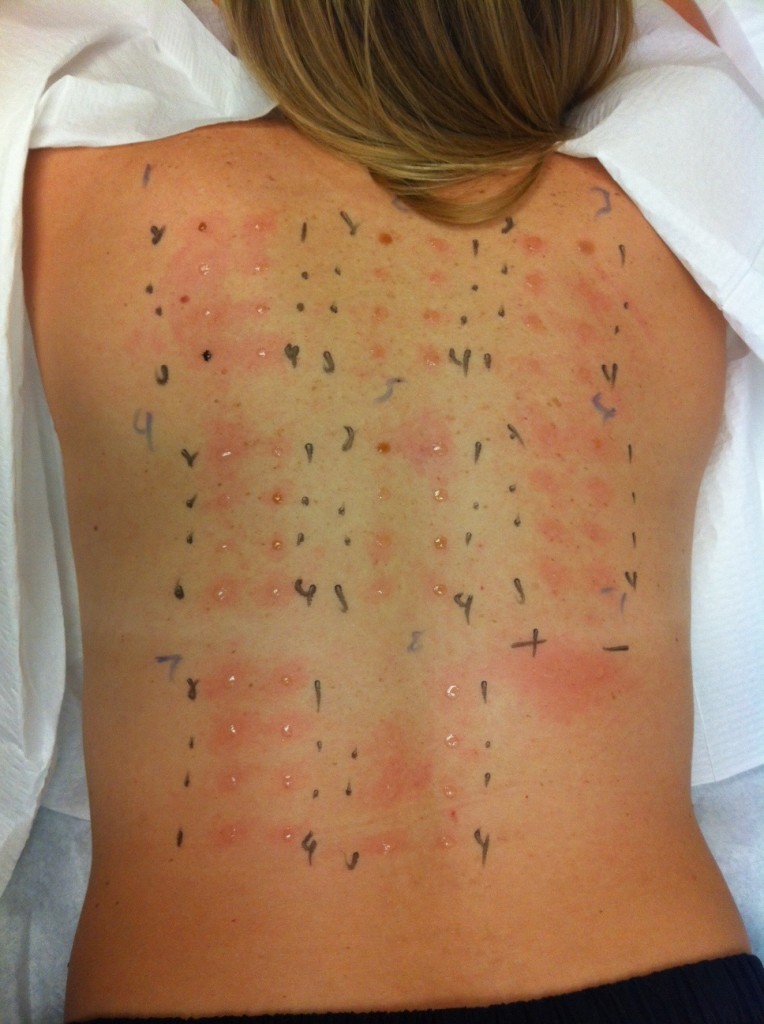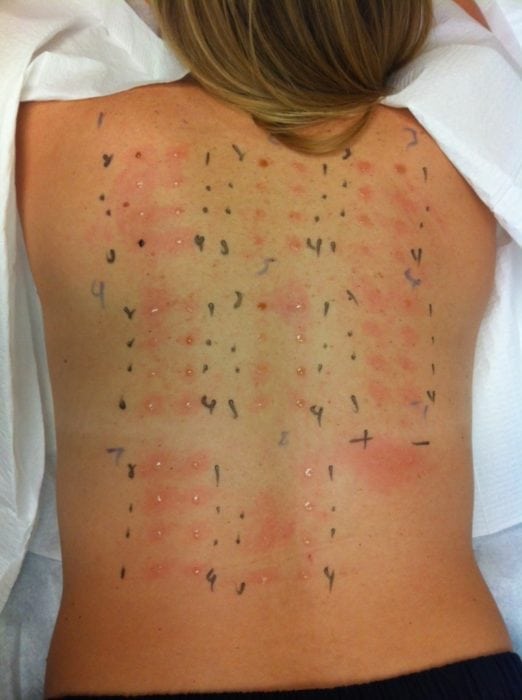It can drive you crazy trying to figure out why you are sick (again). Unless you have seasonal allergies, hayfever… if the pollen isn’t flying it’s hard to consider allergies when we’re programmed since very young that every sniffle is explained by “caught a cold” or “picked up the bug going around”—and of course we look for how we “got it” within the last 24 hours.
Or… we do the opposite. We assume there is “something in the air” when our small intestine and colon are screaming for relief, our gut bacteria are imbalanced, perhaps a foreign invader actually made it through our defenses.
First off, is it allergies or a cold?
 Come fall or winter, we think every “coming down with something” is a bacteria or virus, is this true?
Come fall or winter, we think every “coming down with something” is a bacteria or virus, is this true?
Is it true that running a fever means there is a bug, not some other problem?
Should we run to “cold medicine” or antibiotics at the drop of a hat? No.
In fact, medical consensus (finally) agrees that the environmental triggers (mold, pollen, food…) causing allergic reactions can stress your immune system enough your body no longer can defend itself from opportunistic bacteria, yeast, or virus. What once started as an allergy can run the body down and become a bona-fide cold. Sensitivity to what we ate, chemicals or metals, mold or even our favorite pet can run us down enough that bacteria, viruses… move in, especially if you lack vital nutrients.
Nutrition Response Testing® can tell one from the other. Otherwise, it’s anyone’s guess since allergy tests are imprecise at best and the general practitioner tends to assume (and prescribe antibiotics).
Perhaps your “flu” isn’t a bug at all, but something you ate last Tuesday? Well hopefully the following information will bring some “relief” to understanding why.
The ever-complicated food allergy / food hypersensitivity
For a minute, let’s look at food: According to Dr. Ronald Grisanti DC, DABCO, DACBN, MS of Functional Medicine University, the food-hypersensitivity reaction—the medical term for “food allergy”—is estimated to affect up to 20% of us but only 4% of Americans have allergies that involved making antibodies against the food item. Why?
Consider this: Modern foods are full of preservatives, stabilizers, colorings, literally thousands of chemicals. Your immune system is particularly concentrated along the entire length of your digestive tract. Special cells in your small intestine “sample” the material you’ve chewed, swallowed, and has been delivered to this amazing organ via the acid environment of your stomach (by the way, that acidic stomach normally kills most pathogens). What happens when the sampled food includes a foreign chemical? Or food preservatives? Or… ? Does your body now consider this nutritious and desirable? Or foreign, keep away, attack?
Chemical ingredients added to food work just like the adjuvants added to vaccines (and other medications) that enhance the immune response. Food colorants and anti-caking agents stimulate gut immune response and can lead to autoimmune situations like Crohn’s disease and other inflammatory bowel diseases.
Could your hives or asthma be something you ate?
Adverse reactions to just one type of food additive, sulfites, include: tightness in the chest, breathing difficulty, hives, stomach cramps, diarrhea, and sometimes, anaphylactic shock.
Monosodium glutamate, MSG, reactions are usually mild, maybe a “skin-crawling sensation” or heightened anxiety. But there can be severe reactions, including hives; swelling deep in the skin, especially lips, known as angioedema; worsening asthma, and even anaphylaxis.
Once your immune system decides Food+Additives is the problem, switching to a clean version of that food may not be enough. Buying clean food is key, but if your body has developed hypersensitivity to a particular food (or, usually, many foods) you’ll have to take a break from eating them until we can fix the problem.
The best allergy solution is to understand what your body is doing
 The term “allergy” was originally coined by Dr. Von Pirquet to include both facets of the immune response:
The term “allergy” was originally coined by Dr. Von Pirquet to include both facets of the immune response:
- both beneficial immunity (the protective goal of vaccines or exposure when young) and
- the harmful hypersensitivity (the other effects of vaccines as well constant exposure to pathogens, anti-foods, toxic chemicals and metals/minerals.
Today, the word allergy refers only to unwanted effects—but it’s the same process.
And… it gets complicated because different reactions take different amount of time to develop: Immediate vs. Delayed, further distinguished as Types I, II, III, and IV.
Typed I is immediate hypersensitivity and occurs in less than two hours. If you respond to something immediately, it’s easy to identify what it was: Eating strawberries or MSG that produces immediate tingling or hives within the hour. Most people know they have a peanut allergy because the noticeable response is fast.
What if the thing you breathed in is not obvious, or not avoidable? Conventional allergy testing usually involves pricking the skin with suspected allergens to see if there is any reaction. Treatment includes avoidance, anti-histamines, and epinephrine-containing epi-pens.
Delayed reactions are far more complicated…
Type II is a delayed hypersensitivity. The allergic reaction occurs from two hours to several days after exposure. It is the body’s attempt at destroying whatever it sees as foreign or threatening. Including itself: Most autoimmune situations are Type II allergies. Conventional testing involves detecting antibodies against one’s own body parts and then suppressing the immune system with anti-inflammatory or immune suppressing drugs. Using Nutrition Response Testing, your diet diary, and my “radar”, we can stop this process.

Type III is also a delayed hypersensitivity occurring days to even weeks after exposure. This one is the most confusing and difficult to understand. In a
complicated sequence of events:
- you eat a food,
- silently, your body has been telling you it doesn’t like this food (Often a result of “leaky gut” where incompletely digested food particles enter your blood-stream—and are seen as foreign and threatening),
- after a while, your body decides to make antibodies to a component of this food (famous example is gluten from wheat or casein from milk),
- at some point, you eat the food again but this time the antibodies signal a full blown immune response.
- the body’s immune response makes a variety of inflammatory molecules that act both locally (damage blood vessels and cause blood clots) as well as systemically (tired, feel like am “catching something”…).
The difficulty is these are often foods you’ve been eating all your life! Your body just began to tell you how it feels about them.
Healing this means avoiding key food triggers (assuming you can find out what they are); heal your gut and other organs. The good news, I guess, is that it is nowhere near as many problem foods as you might think. When I start a client on an elimination diet, it is guided to maintain proper nutrition while restricting as few “offending” foods as possible.
Type IV is also delayed hypersensitivity but by yet another mechanism: The bottom line with Type IV allergies is that your protective army, your white blood cells which are supposed to engulf and eliminate foreign bugs, metals, damaged cells… can’t keep up. They engulf the foreigner or damaged cells but lack the resources to break them down. This keeps this white blood cells in constant stimulation, constantly making inflammatory hormones, constantly overworking your liver by asking it to remove a constant steady stream of immune complexes and inflammatory hormones—and also your spleen which is tasked with removing used white blood cells.
Are things making more sense now? Can you see how today’s sniffles or rash could be the corn you ate two weeks ago? Or all your life?
Read on for the best allergy medicine
Now knowing the variety of events that can happen as a result of foreign intrusion, can you see why the list of allergy symptoms and health reactions is very long and diverse and can even become a problem only after years of irritating anti-foods, chemicals, metals, etc?
Can you see why the average health care provider might miss that it’s even an allergy at all? Much less not be able to identify the cause?
You have choices, if you suspect allergies.
Undergo a variety of expensive and often non-specific, allergy tests and/or adopt the pharmaceutical model of taking a drug to lessen the symptoms while avoiding a long list of “triggers.”
Vs.
 Retrain your body and get it to stop being so reactive. Calm it down and heal.
Retrain your body and get it to stop being so reactive. Calm it down and heal.
Accelerated Allergy Clearing Technique quickly screens for unwanted reactions to common environmental triggers, mold, foods, chemicals, pollen, metals, mites, and other common allergens are affecting your system, or not.. Regardless of the hypersensitivity type, our exam can detect whether
Once we determine if you are a true allergy case or just have a couple of “offending foods or substances” we can desensitize you (no more allergic response, or at least not as bad) while design a program with specific steps to heal all the body systems that have been affected by an immune system on hyperdrive. This is important.
We’re so successful because we find the exact cause and correct your health problem in a way that honors your body, naturally.
There is hope and I can help: Call 907-222-1824
Mention this post and ask for my Internet Special.
Lomer, M., Thompson, R., & Powell, J. (2002). Fine and ultrafine particles of the diet: Influence on the mucosal immune response and association with Crohn’s disease. Proceedings of the Nutrition Society, 61(1), 123-130.
Powell, J. J., Thoree, V., & Pele, L. C. (2007). Dietary microparticles and their impact on tolerance and immune responsiveness of the gastrointestinal tract. The British Journal of Nutrition, 98(Suppl 1), S59–S63.


Leave a Reply
You must be logged in to post a comment.